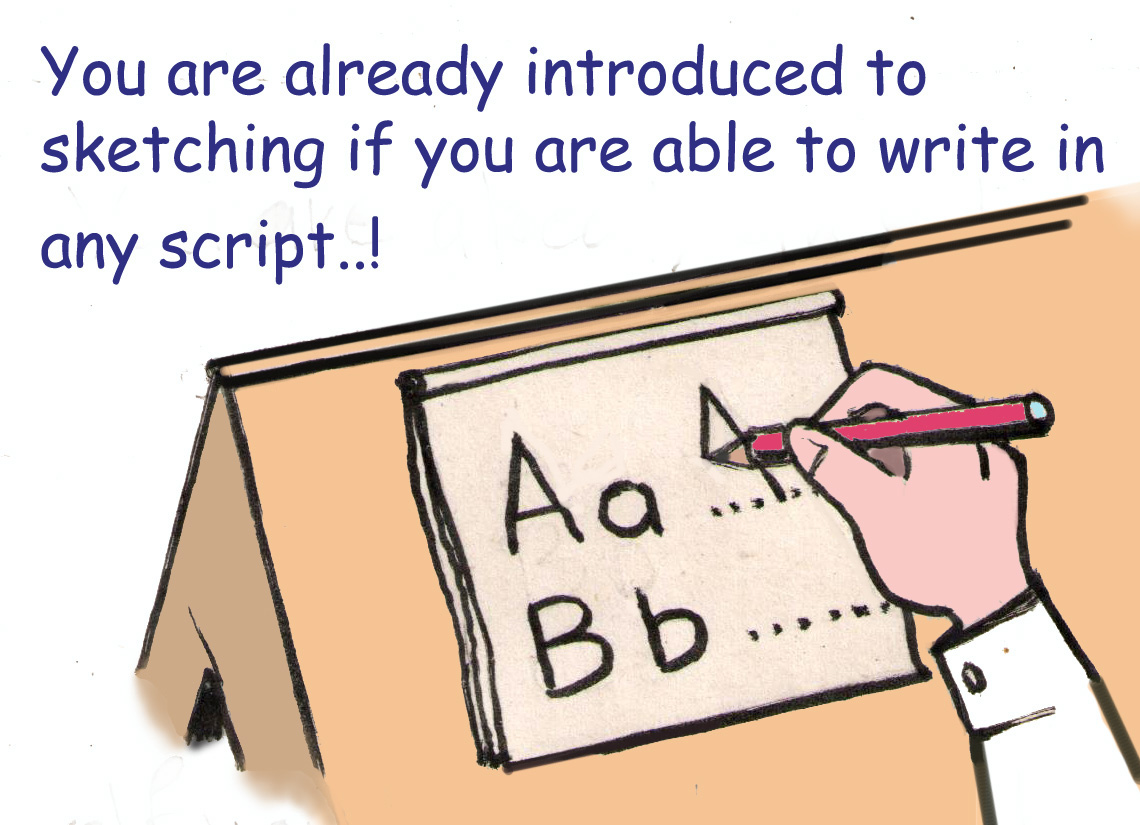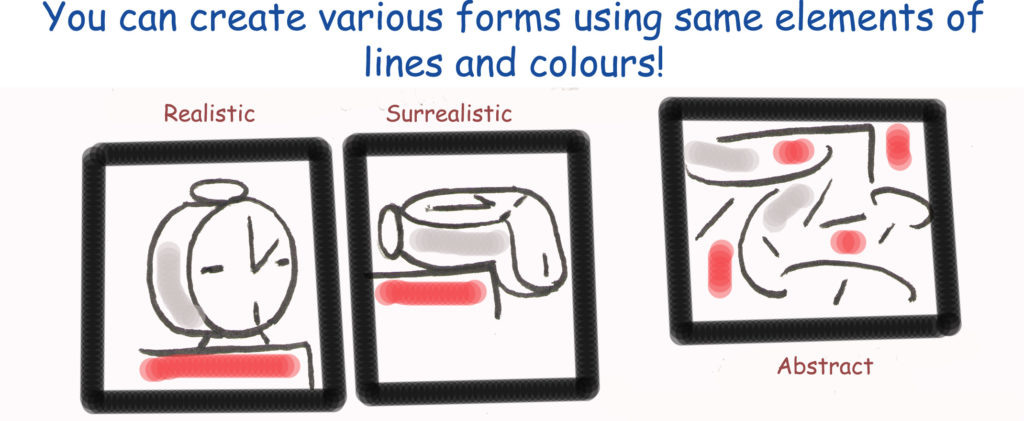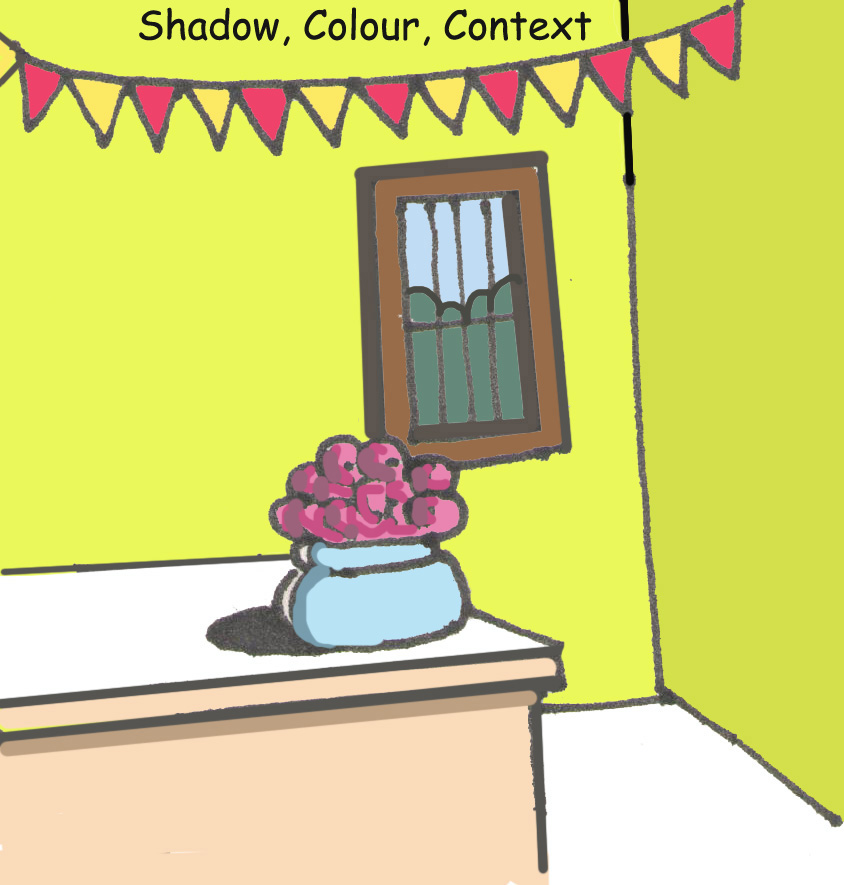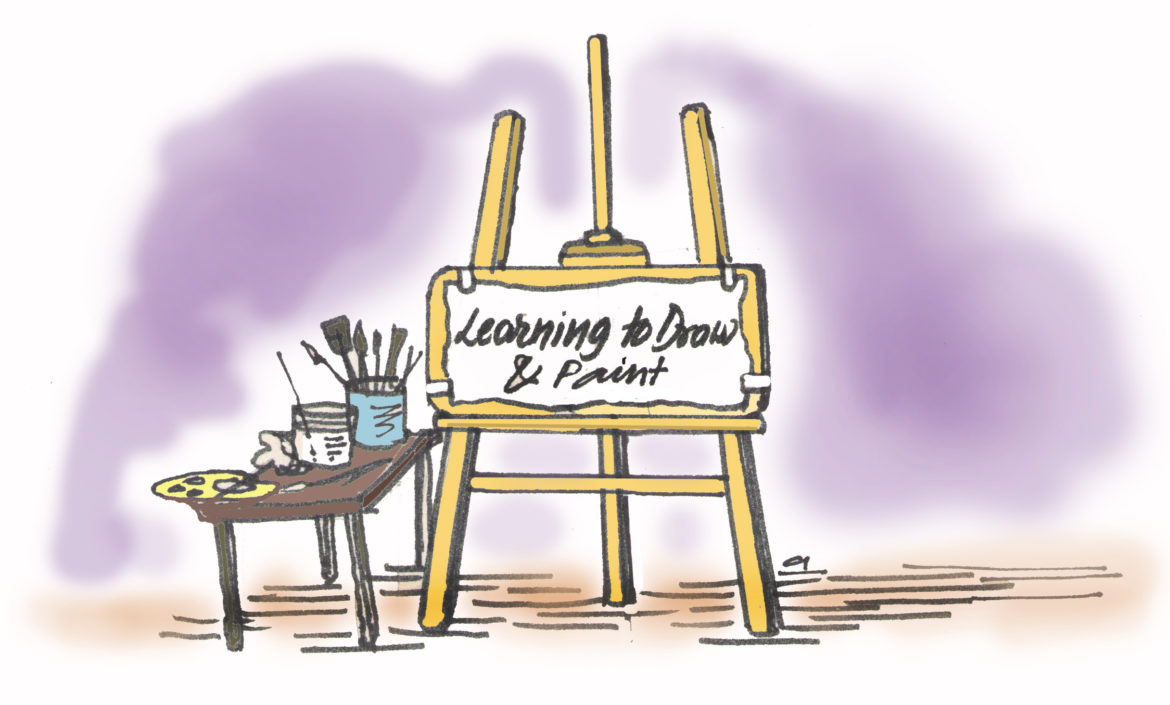I believe, introducing ‘Art’ has been one of the most challenging tasks of our education, as it involves exploring one’s ‘creativity’ and while doing this, one has to be utmost cautious about not harming the very purpose of this exercise.
As such, I was never formally trained in sketching/drawing. Whatever happened during my school days under the garb of art classes, can, at best, be termed as ‘learning on your own’ without getting even the rudimentary introduction/guidance, which I wish to provide here.
In this write-up, I intend to share with you some basic ideas I have gathered during the course of my own art journey’(that includes sketching, drawing and cartooning besides observing hundreds of others involved in a variety of arts). I just hope they will help improve your understanding of this subject and help in developing a proper perspective towards the field of art, that you can build on.
Let’s look at them.
What is Art? Why is it Essential? How Does it Happen?
The broad purpose of art could be that of enriching the viewer with new experiences and perspectives, thus taking ahead our intellectual evolution, which we call ‘culture’!
Every art is about ‘designing a space’! So, we will always find a ‘space’ and some ‘implements/tools’ involved in every artistic creation. This ‘space’ could be a canvas for a sketch artist/painter and implements are his pencils, brushes and colors. For a musician, it can be a virtual space made up of ‘silence’ and their tools could be the artist’s voice or the sound of the instruments they play. For a dancer/performer a stage can be the ‘space’ whereas the body of the performer is the tool. For writers, the ‘space’ could be the confines of the language they write in and their knowledge base could work as the implement.
The artists may ‘create’ the art either for themselves or for communicating their point of view to others. Based on whom they address it, the ‘creative’ piece may or may not follow the conventions of presentations/renditions understood by all. That’s why some of the art pieces may be intelligible to all, but some may not be.
Dealing with the ‘Creative (mental) Block’
We always meet people who are simply scared to try out any art and say they are not made for the art field. To me, this fear seems the foremost and the most important area to be addressed before we start on the art journey. This is very much true with the art of drawing/sketching too. We need to understand that it is just a psychological feeling and is totally unfounded for two simple reasons:
First, if we see the history of mankind we’ll know that man started sketching before he created the scripts of the languages we speak today. Naturally, we learnt to sketch before we learnt the language scripts. So it should be easier in comparison.

Second, none of us are new to drawing/sketching, as the alphabets of scripts we learnt to draw are nothing but sketches/drawings of certain shapes. So, although we may not have consciously thought about it, all through our language learning days, we have already learnt drawing /sketching when we learnt to write (in any script)!
Learning sketching/drawing is all about your brain-organ (hands, feet, or any body part used for creating art!) co-ordination. So, we know that the more you try, the better you get at it. That’s why, while improving handwriting, we emphasize on more practice, as that alone makes you perfect. People who believe in improving handwriting through practice willneed no emphasizing that drawing/sketching can also improve with efforts in right direction.
Incidentally, no art is ‘God given’. It can all be developed with a reasonable investment of time. Every artist, depending on his ‘aptitude’ of learning, will have a history of huge amount of practice that has gone into developing his/her presentation skills. For a viewer, an artist may be able to create a meaningful art effortlessly with just a few brush strokes, but,s/he will have undergone a long penance of practice to reach that stage.
Difference Between Art and Craft
We always mistake a good craftsman for a good artist. To me,‘craft’ is about acquiring a skill to draw and paint whereas ‘art’ is its application to create something new.
An artist normally aspires to create a mood or make sense through the use of colors and lines on the designated space to appeal to the aesthetic sense of a viewer. If your creation matches that of the viewer’s liking, the viewer would appreciate your work. If it doesn’t, the created work may not get due recognition. An art piece, in effect, is nothing but an arrangement of lines and colours in a layout, that we call as a ‘composition’.

Based on this composition and its semblance to reality, one can categorize art into forms like ‘Abstract’(where there is no semblance to reality) or ‘Realistic’ (where the art forms resemble reality and follow real-life conventions such as size, shape, proportion, perspective, shadow, color-tone-texture and context). There is also one more category in between these two, where the creation partly follows the real-life conventions and is termed as ‘Surrealistic’. These art forms can be further classified into several types based on their purpose, style, etc.
Matter of Style/Signature
An artist may wonder if s/he should have his/her own style. Truly speaking, the ability to draw in any given style should add to the versatility of the artist. But since art is about creating something new, copying a style will always be looked down upon by the critics of art. Any artist will tell that style gets developed over a period of practice and it will be a combination of your abilities as well as the influences on you that shape your liking. So, one doesn’t have to be so much bothered about developing his/her style. However, style carries meaning when one wishes to sell his art and also when it plays a role in facilitating/confining your expression.
How Can One Improve?
After you embark on the art journey, the ways to improve yourself can be found with your own judgment of what would be apt. Like in every other field, you need to be a thinking person here too, to achieve whatever you aim at. For every artist, regular practice is the best way to remain in touch with his/her art and evolve as an artist. The easiest way is, to keep sketching what you see around and continue doing it every day.

There are umpteen tools and techniques available these days to add to the ease of making your presentations. Their information is easily available from the internet. Some of the tools and techniques could also be available only on the computer in the form of packages like Photoshop, Illustrator, or Apps like Procreate. One has to keep abreast of these and pick and choose what is good for your kind of work.
The ultimate art teacher is Mother Nature. Even if you keep seeing one single natural spot throughout the day the change in the play of light and shadows will make it look different every time you see it. For realistic art, this can be your best reference. Besides, the works of old masters will always act like lighthouses guiding you to your desired destination by inspiring you to take your art to higher levels.
Throughout your art journey, maintaining the quality of your work is of paramount importance as it will keep influencing the art that you create and will get encouraged or discouraged by the critics based on its quality. Any compromise on this aspect will be at the cost of your image as an artist and your work.
I feel this short introduction would suffice to give you an idea of what lies ahead of you. So, good luck to you for your art journey and do get back to me if you ever have any more comments!
We hope you have enjoyed reading Fundamatics, the award-winning ezine published by the IIT Bombay Alumni Association, envisioned as one that is by IIT Bombay alumni, faculty and students, and for the same vast community. And, the best part of Fundamatics is that it is completely free and can be accessed by thousands of our alumni who are spread all over the world. But this does not mean that we do not incur any operational costs in bringing the ezine to you. Your financial support can mean that we can continue to remain in circulation and “free” to you, our readers.

3 comments
Hi Arun, nicely writren in a simple language. Congratulations!
Hi Arun, nicely written in a simple language. Congratulations!
A wonderful piece for everyone. I had the joy of working with Arun (Prof. Inamdar) on GIS-based data informatics and I knew of his passion for art and a bit of his art work.
I like especially, the paragraph that begins with “no art is ‘God given’”. It is a piece of writing that reflect Arun’s creativity, his skills as a philospher and guide.